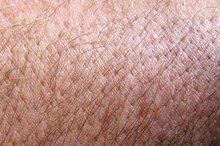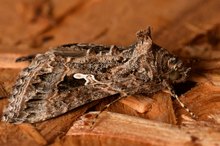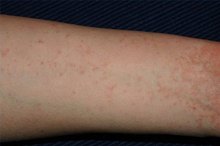What does fact checked mean?
At Healthfully, we strive to deliver objective content that is accurate and up-to-date. Our team periodically reviews articles in order to ensure content quality. The sources cited below consist of evidence from peer-reviewed journals, prominent medical organizations, academic associations, and government data.
The information contained on this site is for informational purposes only, and should not be used as a substitute for the advice of a professional health care provider. Please check with the appropriate physician regarding health questions and concerns. Although we strive to deliver accurate and up-to-date information, no guarantee to that effect is made.
Allergy to Deer Flies
Deer flies, members of the tabanidae family of insects, are biting flies. The bites can be a source of allergies in some individuals. The flies can also carry diseases. Both the deer fly and its larger cousin the horse fly fall under the same family and pose the same threats of allergic reactions and disease.
If you are experiencing serious medical symptoms, seek emergency treatment immediately.
Description
Deer flies are the size of the common house fly at about 1/4 inch long. The flies vary in color from yellow to brown to black and have dark bands on their wings. Eyes are often a distinctive iridescent green. The larvae stage of deer flies lives in water 3. The most common habitat for deer flies includes areas near streams or swamps.
- Deer flies are the size of the common house fly at about 1/4 inch long.
- The flies vary in color from yellow to brown to black and have dark bands on their wings.
Biting Flies
Differences Between Bedbugs & Chiggers
Learn More
Deer flies are biting flies, meaning they have a mouth that resembles a scissors that cuts or bites into the skin. The insect inserts saliva that contains an anticoagulant into the bite to prevent blood clotting. Allergic reactions are in response to this substance. Only female deer flies bite and usually feed during daylight hours.
- Deer flies are biting flies, meaning they have a mouth that resembles a scissors that cuts or bites into the skin.
Symptoms
Sores at the site of the bite along with fever and a general sense of disability are all common symptoms of an allergic reaction to deer fly bites. The most severe reactions can include hives, vomiting and breathing problems. Repeated bites can increase the person’s sensitivity to the bites, leading to more intense allergic reactions, according to the website of Ohio State University 3.
- Sores at the site of the bite along with fever and a general sense of disability are all common symptoms of an allergic reaction to deer fly bites.
- Repeated bites can increase the person’s sensitivity to the bites, leading to more intense allergic reactions, according to the website of Ohio State University 3.
Treatment
Grass Mite Bites
Learn More
Treatments for mild allergic reactions include a cold compress and hydrocortisone cream, according to the website of the Mayo Clinic. It also recommends any over-the-counter drug that contains the antihistamine diphenhydramine. Treat anyone with severe reactions, those that include loss of consciousness or breathing difficulty, with antihistamines and take him to an emergency room immediately. All treatments should include steps to prevent additional bites that could increase the severity of allergic reactions.
- Treatments for mild allergic reactions include a cold compress and hydrocortisone cream, according to the website of the Mayo Clinic.
- Treat anyone with severe reactions, those that include loss of consciousness or breathing difficulty, with antihistamines and take him to an emergency room immediately.
Other Health Issues
Exposure to biting flies can lead to exposure to diseases such as tularemia or rabbit fever, cholera and anthrax. The open wounds of the bites are also ideal for local infections. Treat deer fly bites with antibiotic creams and monitor for signs of infections.
Related Articles
References
Writer Bio
Keith Allen, a 1979 graduate of Valley City State College, has worked at a variety of jobs including computer operator, medical clinic manager, radio talk show host and potato sorter. For over five years he has worked as a newspaper reporter and historic researcher. His works have appeared in regional newspapers in North Dakota and in "North Dakota Horizons" and "Cowboys and Indians" magazines.








